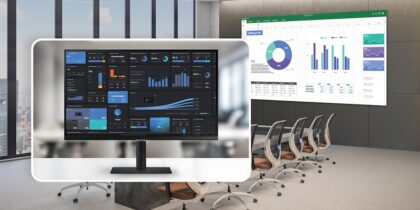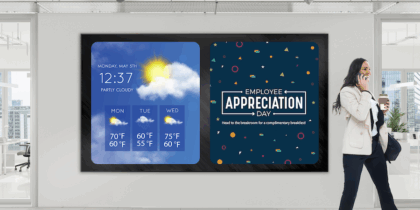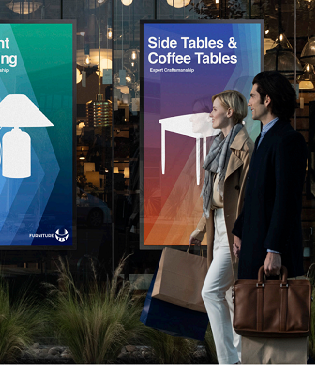The latest high-resolution 8K displays bring a new, powerful tool to boost picture quality and device capabilities — artificial intelligence. The technology uses machine learning to enhance the video picture to new levels of clarity and quality. The most advanced displays take it one step further with a feature called AI upscaling.
Through algorithms and computing, the technology can augment lower-resolution content — such as full HD and 4K — by scaling it to 8K, intelligently populating the additional screen space with incredibly rich and sharp visuals. AI upscaling analyzes and adapts video content as it plays, creating a near-native image rather than a stretched, low-resolution one, even if the original content wasn’t created for such high resolution. It also demonstrates the value of 8K resolution and its impact on visual displays.
What is 8K?
LCD, LED, QLED and OLED displays have a defined number of horizontal and vertical pixels. These determine the screen’s resolution. Displays with 4K resolution have 3,840 by 2,160 pixels, while 8K displays have 7,680 by 4,320 — four times as many. A 4K video shown on an 8K display would therefore fill the middle of the screen, surrounded by a sea of black. AI upscaling solves this problem by converting the signal to fill the entire display without degrading video quality.
How to plan and deploy direct view LED signage
Everything you need to know about choosing your LED displays for optimal viewing indoors and out. Download Now
Deep learning AI technology
AI upscaling uses advanced algorithms and pattern matching to analyze existing video pixels, then closes the gaps and produces a video that is sharper, boasts better-defined edges, and richer detail. Displays with this AI technology, such as Samsung QLED 8K and Samsung The Wall MMF, have onboard microprocessors and software that scan adjacent pixels within a video frame and use machine learning to determine how the new pixels should look.
Samsung deployed its AI 8K upscaling technology in 2018, based on research and development from its in-house Picture Quality Solution Lab. The goal was to use deep learning algorithms to ensure displays are always optimizing video quality. While previous machine learning technology enhanced the sharpness to display picture quality, AI was also able to offer more delicate texturing. That was particularly effective for images with complicated textures, like mountain or grass landscapes, which can now be upscaled into 8K quality more naturally.
Expanding 4K content to fill 8K displays is just one advantage of AI machine learning. The technology can also reduce video background noise, repair distortion from compression and categorize content by video quality. AI upscaling also improves images by adjusting depth, light, color and line differentiation — creating more lifelike visuals that make movies, sports and video games truly stunning.
Why go 8K?
IT teams and managers may wonder why investing in 8K technology is a good idea, especially since the relatively limited amount of native 8K consumer video content requires significant computing overhead and infrastructure demands. Plus, for most everyday commercial applications — such as retail digital signage and menu displays — 4K resolution meets all the needs.
One answer is the intended application. 8K screens can deliver the granular detail you want for display projects in applications such as medical imaging and research, energy exploration, museums and archives. Imagine medical imaging on a lobby video wall at a cancer institute, showing the super-fine details typically visible only under a microscope. Or, imagine ancient manuscripts in an online exhibit, digitized in such fine detail that the viewer can even see minute characteristics of the paper and ink. Gamers represent another audience that prizes best-in-class visuals. In industries like these, 8K can provide a digital image like no other.
The future is now
When 4K displays first hit the consumer and commercial display markets, critics conceded that 4K video looked amazing but complained there was little 4K content available. Today, 4K video is commonplace. The same trajectory may be true of 8K, as more native 8K video enters the pipeline over the next few years, along with displays to screen it on.
In the meantime, AI upscaling can seamlessly elevate 4K resolution to 8K, closing the gap for today’s projects. When paired with cutting-edge features in The Wall MMF, such as 20-bit processing for precise color mapping, true black presentation and certified eye comfort, the results are even more impressive. These advancements offer users a competitive edge, setting them ahead of the curve.
To learn more about video walls and LED projects, check out our free white paper. Also, explore the latest display technology from Samsung in The Wall MMF.









